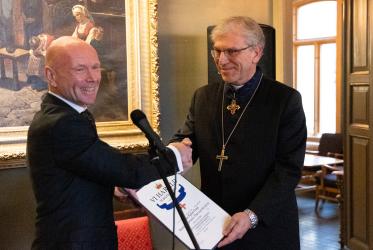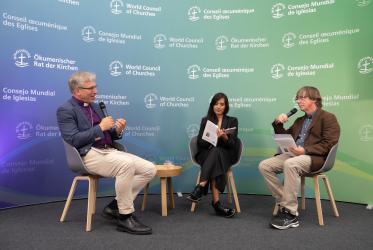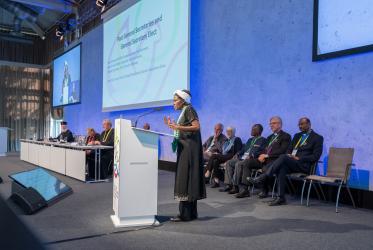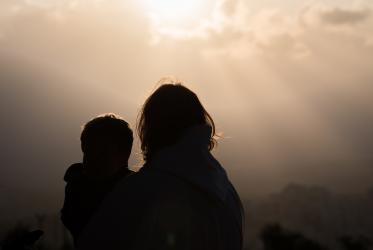Always be ready to make your defence to anyone who demands from you
an accounting of the hope that is in you."—1 Peter 3:15
Madam President, Dr Irmgard Schwätzer,
Mr Chairperson of the Council, dear brother, Nikolaus Schneider,
Most distinguished Synod,
It was a fitting choice and a clear signal that you have selected Dresden's Kreuzkirche as the venue for the opening worship service of your Synod, a service commemorating the fall of the Berlin Wall 25 years ago. It was in the Kreuzkirche that, during the months, weeks and days that preceded the fall of the Berlin Wall, prayers for peace had been conducted. It was also in the Kreuzkirche, in 1988, that the ecumenical assembly of the conciliar process for "Justice, Peace and the Integrity of Creation" took place. That assembly gave forceful impetus to the peaceful revolution. It inspired the many people who went into the streets and demonstrated.
I am convinced that now, a quarter century later, we need a new movement that takes its roots in the cross, a symbol of God's peace and God's justice that we hold in common. The delegates to the WCC 10th Assembly a year ago in Busan, Republic of Korea, prayed together: "God of life, lead us to justice and peace!" Prepared to live out this prayer truly and to work with others who share the same vision and hope, they called upon people of good will to join the "Pilgrimage of Justice and Peace." I was extremely happy that at last year's Synod you, too, embraced this appeal.
The Berlin Wall on 9 November 1989 did not fall all by itself but, rather, thanks to a movement of many people who demonstrated peacefully in the streets. Along with political players, they were convinced that just peace is possible. In this way, they transformed the Cold War and the rivalry among superpowers in Europe into the vision of a continent founded on reconciliation and peace, and on sharing a sustainable economic and social development.
This vision and this movement for just peace and an economy dedicated to life is today more urgent than ever—especially wherever walls, fences and deep trenches of hostility divide peoples, such as at the border between North and South Korea, in the occupied territories of Palestine or on the Island of Cyprus, in Sudan and in the Democratic Republic of the Congo.
Once again, we see young people inspired by the vision of life with justice and peace. They are answering the call to join the pilgrimage as a movement of common prayer and common action. A few weeks ago, 400,000 people demonstrated in New York City for climate justice. The WCC was there, with 30 eminent representatives of diverse religious communities. I hear with joy that more and more congregations, groups and churches in Germany are preparing themselves for public actions in favour of a pilgrimage for climate justice leading up to the United Nations Climate Change Conference to be held in Paris next year. The wall of resistance to change continues to be strong and high. But this wall, too, can fall.
Today, for such movements and the networking they necessitate, digital media are indispensable. Email, internet, social-media presence, video conferences and webinars are important tools, including for an internationally active organization such as the World Council of Churches. One thing is clear to us: Communication about and for the pilgrimage means network communication such as made possible by digital media—intensive sharing of experiences and mutual encouragement of all those who, together, are on the path of justice and peace in their respective contexts.
We wish for you and your deliberations and most especially for the crucial elections that are on your agenda, God's blessing, the wisdom and courage that give us faith, hope and love on our Pilgrimage of Justice and Peace.
Rev. Dr Olav Fykse Tveit
WCC general secretary



